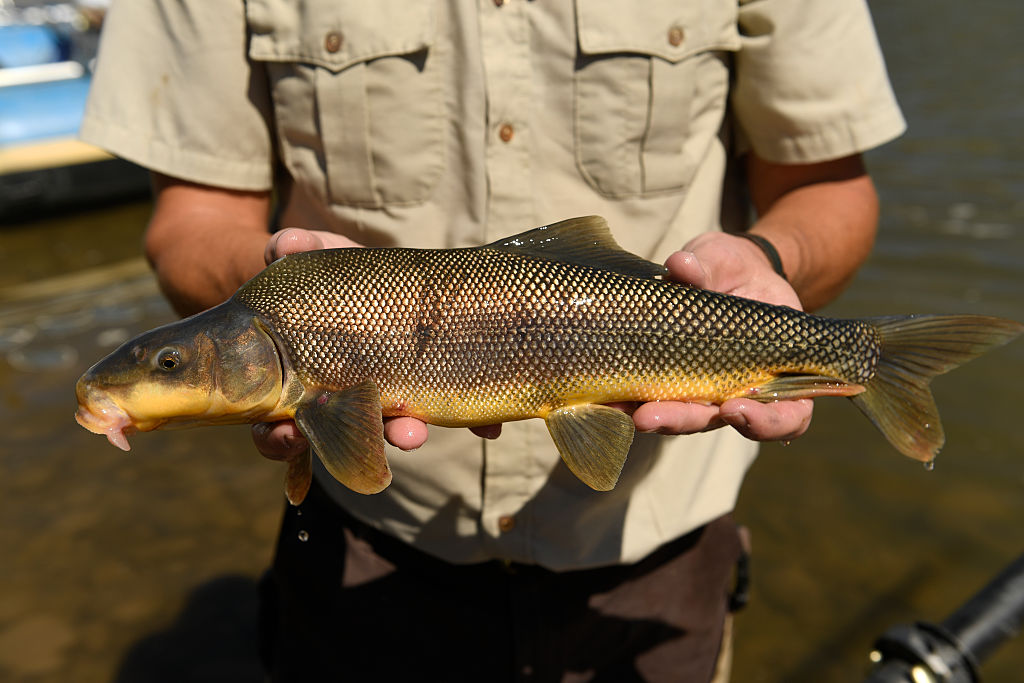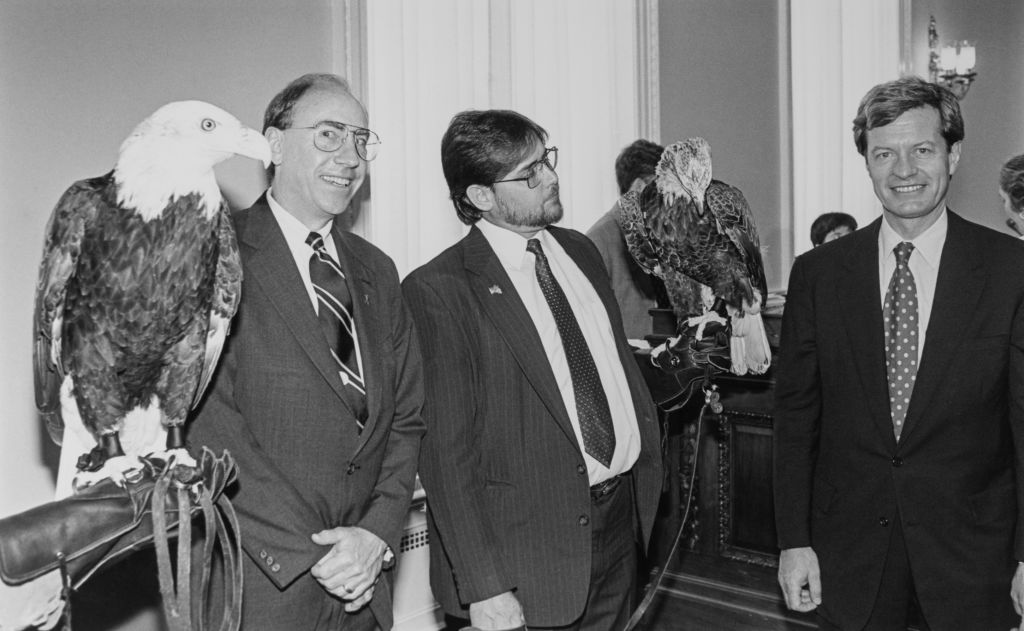
The Endangered Species Act is 50 years old Thursday. In recent years, the act has become a pawn in partisan battles over federal regulatory powers, with opponents arguing the law infringes upon private property rights and places restrictions on industries such as logging, mining, and oil and gas extraction. Republicans introduced 52 bills in 2018 and 15 bills in 2022 in attempts to weaken the act.
But focusing on these partisan debates overlooks the Endangered Species Act’s successes. For decades the act has protected nature with widespread and bipartisan support, rescuing hundreds of animals and plants from annihilation. Even more consequentially, the Endangered Species Act revolutionized federal environmental management at a time when the government itself was a main threat to wildlife. This is the act’s least recognized and most significant accomplishment: it transformed the U.S. Fish and Wildlife Service from a wildlife killing service to a wildlife recovery service and helped to birth the global science of restoration ecology.
Read More: How the Endangered Species Act Saved America
In 1973, the Endangered Species Act passed in the Senate unanimously and in the House by a vote of 345 to 4. The act authorized the U.S. Fish and Wildlife Service and the National Marine Fisheries Service to establish a list of endangered and threatened plant and animal species, and made it illegal to collect, harm, or kill certain species. Crucially, it also required federal agencies to ensure that any actions they authorize would not “jeopardize the continued existence” of listed species or result in the “destruction or modification” of habitats deemed critical for those species.
Before the act, the federal government had actually encouraged the killing of certain species in the name of “predator control.” From 1916 to 1933, the Biological Survey, the predecessor to the U.S. Fish and Wildlife Service, killed 458 bears, 6,141 bobcats, 54,629 coyotes, 148 mountain lions, and 33 wolves in the state of Oregon alone. Federal wildlife managers saw themselves as protecting livestock, agriculture, and game, artificially increasing the population size of species like trout and mallards for the benefit of anglers and hunters.
Lawmakers first became interested in reforming federal wildlife management after a 1964 advisory board found that over the previous year, federal and state wildlife managers had killed approximately 200,000 predators with a cost that greatly exceeded the value of livestock lost to predators. The committee cautioned that “times and social values change,” and that “for every person whose sheep may be molested by a coyote” there were “perhaps a thousand others who would thrill to hear a coyote chorus in the night.” If the government did not change its environmental management practices soon, the committee concluded, the public would force reform.
And values did change. In 1970, more than 20 million people participated in the first Earth Day, one of the largest public demonstrations in U.S. history. In his Environmental Message of February 8, 1972, Republican President Nixon pointed out that existing legislation “simply does not provide the kind of management tools needed to act early enough to save a vanishing species.” In this message, Nixon also announced Executive Order 11643, which banned the use of poisons for predator control on all public lands. The following year, the Nixon Administration, Rep. John Dingell of Michigan, and Sen. Harrison Williams of New Jersey, submitted the nearly identical bills that would become the Endangered Species Act of 1973.
Read More: Australia Pledges No New Extinctions Over Next Decade
The mandate to implement the Endangered Species Act forced the Fish and Wildlife Service to entirely change how it managed species. The new act extended protections to plants and invertebrates in addition to animals that were not of interest to hunters and anglers. And section 4(f) of the Endangered Species Act, which requires agencies to develop and implement recovery plans for listed species, kickstarted the profession of restoration ecology.
Species like the Kirtland’s Warbler would not exist today without the Endangered Species Act having spurred ecological restoration on public lands. These pert gray and yellow songbirds nest on the ground beneath young jack pines in northern Michigan and Wisconsin. Fire suppression dramatically reduced the extent of young jack pines in the region over the 20th century. The Endangered Species Act prompted federal agencies to develop a system of logging overgrown pine stands and replanting new ones. Managers on state and national forest lands also trapped cowbirds, which parasitize warbler nests. The Kirtland’s Warbler rebounded from a low of 167 pairs in 1987 to around 2,300 pairs, and it was removed from the endangered species list in 2019.

The impacts of the Endangered Species Act extend far beyond individual species. In developing recovery plans for listed species, federal biologists and their collaborators created a new science of ecological restoration. The earliest species recovery plans reflected the view, prevalent prior to the 1970s, that wild species would recover if they were provided “unmolested” habitat. Subsequent recovery plans were more interventionist, recommending actions like captive breeding, invasive species control, or in the case of the Kirtland’s Warbler, tree planting.
Today governments, NGOs, and corporations spend billions of dollars per year on ecological restoration. There is so much momentum behind this global movement that the U.N. declared the 2020s to be the Decade on Ecosystem Restoration.

Read More: Trees Are the Secret Weapon of America's Historic Climate Bill
But the vital work of saving species is only beginning, and the United States has fallen far behind other countries in addressing 21st-century threats to biodiversity: habitat destruction, climate change, pollutants that endure for millennia, and the direct killing of species, whether through road collisions or for food.
Lack of funding has hindered implementation of the Endangered Species Act for decades, as both parties have embraced deregulation. Moreover, while the act succeeded in dramatically improving federal management of public lands, it has fallen short on private lands.

Today, if a rancher finds an endangered tree on their land, cutting down the tree without federal permission would violate the Endangered Species Act and the rancher would be fined. As critics rightly point out, the law incentivizes individuals to kill listed species on their land to avoid restrictions. The rancher could secretly cut the tree down, or claim no knowledge that the species was listed and face a much lesser fine. One third of listed species in the United States depend exclusively on private lands, and an additional third occur on private lands. And yet the Endangered Species Act mandates protection—not restoration—on private property.
Fifty years of the Endangered Species Act has brought us to a place of new possibilities for the future. It is time for new legislation and robust public funding of biodiversity restoration that extends beyond public lands into farmlands, backyards, and cities. The past shows us the power of restoration to enable the more than eight million species on earth—including humans—to flourish.
Laura J. Martin is an environmental studies professor at Williams College. She is the author of Wild by Design: The Rise of Ecological Restoration (Harvard University Press, 2022), and numerous articles on the global biodiversity crisis. She is writing a history of how synthetic herbicides reshaped life on Earth. Made by History takes readers beyond the headlines with articles written and edited by professional historians. Learn more about Made by History at TIME here.
More Must-Reads from TIME
- Cybersecurity Experts Are Sounding the Alarm on DOGE
- Meet the 2025 Women of the Year
- The Harsh Truth About Disability Inclusion
- Why Do More Young Adults Have Cancer?
- Colman Domingo Leads With Radical Love
- How to Get Better at Doing Things Alone
- Michelle Zauner Stares Down the Darkness
Write to Laura J. Martin / Made by History at madebyhistory@time.com
